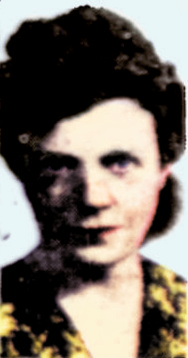The Pittsburgh Press (May 31, 1941)

I DARE SAY —
…
Parry-graphs
…
By Florence Fisher Parry
The personal element simply won’t stay out of human relations; and I didn’t care how removed a scribe may try to be from the things that lie closest to him, they’re bound to leak into his column. Indeed I can understand how great a temptation it could be for even a legislator to find himself leaning indulgently toward some consuming interest of a friend. We don’t mean to be partial but it is awfully easy to rationalize the most highly discriminating action. That is the sad thing about human nature – its very nicest attributes can so easily be used against it.
Now here am I eager to out in a word for Lois Miller’s grand song, “The Rolling Hills of Pennsylvania,” which will undoubtedly become our official state song by designation of the Legislature. And here I am plugging it, not only because it is such a lovely song, but because it is such a lovely song, but because the composer is a good friend of mine and a grand girl; and when I saw her pretty face on the front page of the newspaper the other day I just thought how nice it was to see a Pittsburgh girl “make” the front page not because of a murder or a candle, but because she has made a dignified and beautiful contribution to her state.
I was happy to hear our President mention China in the same breath with Great Britain, as sharing the great burden of maintaining the frontier of our American democracy. We are tired of figures, but it seems to me that mention could well be made again here of Dr. Bowman’s incomparable slogan which he created for the United China Relief Drive in Pittsburgh. He said, you remember, that “aid to China was America’s biggest bargain,” and some of the figures which are confronting me now reminds one how magnified the American dollars become when used for China Relief.
$25 will provide a refugee the basic necessities of life for one year, $30 will supply food, clothing, shelter, care and education for one orphan for one year! I quote from a remarkable brochure which I wish you all could read, and which is issued by the United China Relief at 1790 Broadway, New York City. It is entitled “What Li Wen Saw.” And it asks:
Rice for the bowls of China,
Band for the wounds of China,
Light for the minds of China.
And, in the words of Li Wen:
The hand of friendship of you in America, that men may have hope and faith to build a new life that is better than the old.
The solemn and attentive silences which greeted President Roosevelt’s measured pronouncements reminded us again of the tragic penalty that Col. Lindbergh has paid by lending his presence to the highly-organized “America First” rallies of the last two months.
Had Col. Lindbergh resorted to the sanctuary of a small radio broadcasting room, an entirely different significance would have attached to his utterances.
I seldom save magazines, but there is one I find that I am always loath to throw away – it is The Carnegie Magazine which comes to me monthly and which inevitably reminds me of the wealth of treasure that is contained in our own Carnegie Museum.
Since the fall of Greece, its exquisite models and reproductions of the great sculptural treasures of Athens have assumed an added value; and it seems to me that the parents and teachers who fail to direct the steps of school-age children to the Carnegie Museum are signally failing in their responsibilities today.
The model there of the Parthenon, and the extraordinary reproductions of the Elgin Marbles, provide a more eloquent reminder than any item in the news, of the tragedy that has befallen Greece.
In the Carnegie Museum one item alone is worth looking at for a grave, inspiring moment the East Impediment of the Parthenon with its eternal remnants of everlasting beauty freezing its facade.
It is significant, I think, that most of our great enterprisers have turned to art as a final depository for their accumulations. The debt that Pittsburgh owes to Andrew Carnegie is only now accumulating its great compound interest.
And we can well be staggered by the figures that confront us when we attempt to estimate that mere cash value of the National Gallery at Washington. The record of Andrew W. Mellon, while he was Secretary of the Treasury, seems like pure fable in the light of our present-day excesses of expenditure.
We are reminded that when he was named to this great office in the Cabinet, he found our country involved in a debt of $26 billion. Applying to his position the simple rule of good banking, he met all the financial requirements of the government and, in addition, paid off this debt of $26 billion at the rate of $1 billion a year for 11 years.
Yet the genius that could devise and make work a program such as this, spent his last years in accumulating for his country the art treasures of the world, and finding for them a repository which now stands as the most beautiful and spacious art structure in the world.